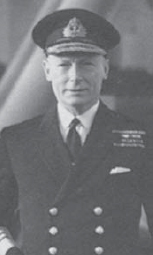
The First Sea Lord and Chief of Naval Staff, Sir Dudley was the man responsible for guiding British naval strategy. In effect he had complete operational, administrative and political control of the wartime Royal Navy. He was based in the Admiralty in London, although he also held an important advisory post to the War Cabinet, which in turn advised the Prime Minister Sir Winston Churchill. Pound therefore bore a heavy responsibility, but he was ably assisted by the rest of the Admiralty, whose various departments provided the Navy with logistical and administrative support, oversaw new ship construction and the readiness of the fleet. While Pound had his advisers, he alone bore the responsibility for operational decision-making.

Vice Admiral John Tovey (1885–1971), the commander of the Home Fleet based in Scapa Flow was a confident and professional commander, although his stubbornness earned him the dislike of Winston Churchill. Tovey orchestrated the hunt of the Bismarck with commendable skill.
He became First Sea Lord in July 1939, and for the next two years he managed to prevent excessive interference in naval affairs by Churchill or the War Cabinet. He had a distinguished career. He commanded the dreadnought battleship HMS Colossus at Jutland (1916), and between the wars he commanded the Mediterranean Fleet. He proved an efficient First Sea Lord, but by early 1941 he was suffering from the brain tumour that finally killed him two-and-a-half years later. He was the man responsible for formulating Britain’s response to the German U-boat threat, and, while he was criticized for certain decisions – most notably his order to Convoy PQ-17 telling it to scatter – he was a reliable and conscientious Commander-in-Chief. One of his innovations was to have a direct telephone link established between his office in the Admiralty and the flagship of the Commander-in-Chief of the Home Fleet, based in Scapa Flow. Attached to a buoy, as long as the flagship was in Scapa Flow, the phone link allowed him to discuss plans directly with the man whose job it was to intercept and destroy the Bismarck.
Commander-in-Chief of the Home Fleet John Tovey joined the Royal Navy in 1900, and at Jutland (1916) he commanded the destroyer HMS Onslow, which played a leading role in the sinking of the German light cruiser Wiesbaden, an incident that earned him the Distinguished Service Order (DSO). Between the wars he commanded the battleship HMS Rodney, and became the second-in-command of the Mediterranean Fleet. However, he always saw himself as a ‘destroyer man’. He became commander of the Home Fleet in November 1940. By early 1941 Tovey was 56 years old, but he looked much younger. He was deeply religious, with a strong sense of morality and justice. It was said he was hard working and exuded professional competence. Superiors and contemporaries also described him as obstinate, with a sense of purpose that brooked no questions from others. That said, he was a dignified, gentlemanly commander who cared for the welfare of all those in the Senior Service, regardless of rank or station. He also had a poor relationship with both the Prime Minister and the First Sea Lord, and this played a part in his transfer in the summer of 1943, a move which was sweetened by promotion to Admiral of the Fleet.
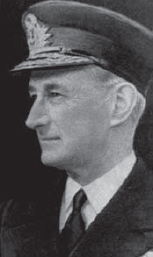
Vice Admiral Ernest Holland (1887–1941) commanded the Battlecruiser Squadron of the Home Fleet, and acted as Vice Admiral Tovey’s deputy. He hoisted his flag in Hood only just over a week before she and Prince of Wales sailed to intercept the Bismarck.
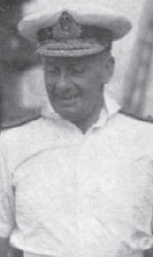
Vice Admiral James Somerville (1882–1949) commanded Force H, based in Gibraltar, which sailed to intercept the Bismarck after she broke out into the Atlantic. He was an energetic and aggressive commander, and was instrumental in bringing the enemy battleship to bay.
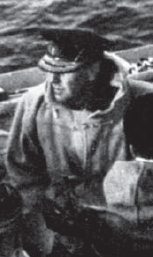
Rear Admiral William Wake-Walker (1888–1945) commanded the Home Fleet’s Cruiser Squadron, and although he was known for being humourless, he was also an extremely proficient cruiser commander. He did a commendable job shadowing the Bismarck during her breakout into the Atlantic.
The main job of the Home Fleet was to prevent any sortie by German surface warships into the Atlantic. During the pursuit of the Bismarck he displayed tenacity and resolve, and his leadership during the high-speed chase across the North Atlantic helped bring about the defeat of his quarry. He had already led the chase of the Scharnhorst and Gneisenau, and let them elude him. This time he had no intention of letting the Bismarck slip through his fingers.
Holland commanded the Home Fleet’s Battlecruiser Squadron, a title that really meant that he was Tovey’s second in command. Shortly before the war he served in the Admiralty as Assistant Chief of Naval Staff and at the Air Ministry before being selected for operational command in 1940. He became a rear admiral in 1938, and was promoted to vice admiral two years later. Holland had an active wartime career, having commanded a cruiser squadron in the Mediterranean, which he handled with distinction at the battle of Cape Spartivento (1940). In May 1941 he was sent to Scapa Flow as Vice Admiral Tovey’s deputy, and he hoisted his flag in HMS Hood just four days before the Bismarck sailed.
The commander of Force H joined the Royal Navy as a naval cadet in 1897, and during World War I he took part in the Gallipoli operation, where he won the DSO. He became a rear admiral in 1933, and commanded light forces in the Mediterranean, before being invalided out of the service with suspected tuberculosis. This proved to be a false alarm, and he returned to active service, taking command of Force H in the summer of 1940. It was his warships that bombarded the French at Mers-el-Kebir, a regrettable but necessary act of war. Somerville was energetic, fun-loving and straightforward, with a lively personality. While he was never viewed as a cerebral commander, his aggressive spirit earned him a reputation as a ‘fighting admiral’, and he knew how to inspire his subordinates with his sense of energy and zeal.
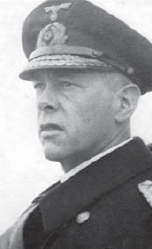
Admiral Günther Lütjens (1889–1941) was one of the most able senior officers in the Kriegsmarine. In 1940 he led the battlecruisers Scharnhorst and Gneisenau on a highly successful sortie into the Atlantic. He expected Operation Rheinübung would achieve even greater results.
Wake-Walker was a specialist in torpedo warfare, and, having spent most of the inter-war years in cruisers, he was widely regarded as the most gifted commander of scouting forces in the Royal Navy – a man who could be relied upon to locate an enemy, and to keep shadowing him come what may. He entered the Navy in 1908, was appointed to the rank of rear admiral in September 1939, and commander of the 12th Cruiser Squadron. He played a leading part in organizing the evacuation of troops from Dunkirk, and in January 1941 he took command of the 1st Cruiser Squadron, based in Scapa Flow. A humourless but professional and intuitive commander, he was a good friend of Vice Admiral Tovey, who relied on him to locate and shadow the Bismarck when she tried to break out into the Atlantic.
The Oberbefehlshaber (Ob.d.M.) or Supreme Commander of the Kriegsmarine, Raeder was the real architect of Operation Rheinübung. The son of a teacher from Wandsbek in Schleswig-Holstrein, Raeder joined the Kriegsmarine in 1894, and was eventually appointed as the Chief of Staff to Admiral Hipper, the commander of Germany’s battlecruisers.
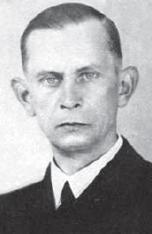
Kapitän zur See Ernst Lindemann (1894–1941) commanded the Bismarck during Operation Rheinübung. An expert in naval gunnery, he took command of the battleship in 1939, and worked hard to make Bismarck an efficient warship. He was still on board when she sank.
He saw action at Jutland (1916), and remained in the Kriegsmarine after the war, becoming its head in 1928. As Oberbefehlshaber he oversaw the development of the U-boat building programme, and the creation of a powerful surface. A thoroughly efficient staff assisted him. His Berlin-based headquarters also housed the Seekriegsleitung, headed by the gifted Generaladmiral Otto Schniewind. He was assisted by Admiral Kurt Fricke, Operationsabteilungleiter, and Vizeadmiral Hubert Schmundt, the Befehlshaber der Kreuzer (Commander-in-Chief of Cruisers), a post that effectively made him commander of the surface fleet.
Raeder followed the course of the operation closely, but in theory he also had to deal with a chain of command that involved two intermediary links. While operating in Norwegian waters – anywhere outside the Baltic and to the east of Iceland – the Bismarck and Prinz Eugen would come under the command of Generaladmiral Rolf Carls, the commander of Gruppe Nord, which was based in Wilhelmshaven. Once the ships reached the Atlantic they would technically be controlled by Generaladmiral Alfred Saalwächer, the commander of Gruppe West, based in Berlin. In practical terms, however, Admiral Lütjens and his command was too important to the Kriegsmarine to allow the chain of command to get in the way of operations. Consequently, Lütjens took his orders directly from Raeder, and the two Gruppen commanders were ordered to do what they could to support him.
Raeder never convinced Hitler of the need for a powerful navy, and after Operation Rheinübung the dictator became increasingly disillusioned with both Raeder and the Kriegsmarine. He was replaced as Oberbefehlshaber in early 1943. Imprisoned after the war, he was released in 1955 and died five years later.
Lütjens was one of the most able operational commanders in the Kriegsmarine. Born in Wiesbaden, he entered the navy in 1907, and served in torpedo boats during World War I. His first major command was the light cruiser Karlsrühe in 1934, and the following year he was appointed to the staff of Gruppe Nord. He then served in various staff posts before becoming Führer der Torpedoboote (Flag Officer, Torpedo Boats) in 1937. When the war began he became Befehlshaber der Aufklärungsstreitkräfte (Commander, Scouting Forces), which gave him valuable operational experience.
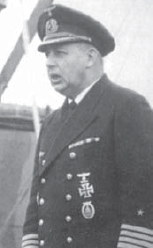
Kapitän zur See Helmuth Brinkmann (1895–1983) who commanded the Prinz Eugen was a former classmate of Lindemann, and the two captains were on friendly terms. During Operation Rheinübung Brinkmann proved himself to be a resourceful commander, evading the British to reach safety.
In April 1940 Lütjens flew his flag in the battlecruiser Gneisenau, and saw action off Norway during a brief engagement with the British battlecruiser Renown. He was awarded the Knight’s Cross for his performance during the Norwegian campaign. In September 1940 Lütjens became an Admiral, and the following January led the Scharnhorst and Gneisenau on their Atlantic sortie – Operation Berlin. He was the perfect choice for a Seekampfgruppe commander, and the man who would put Operation Rheinübung into action. He was a thoughtful, reserved commander, and could be relied upon to weigh all the options before gambling with the lives of his men. Despite later claims, he was no admirer of the Nazis and insisted on giving Hitler a proper naval salute when he inspected the Bismarck shortly before she sailed.
The commander of Germany’s most modern battleship was a 45-year-old gunnery expert from the Rhineland, who first saw active service during World War I. He rose through the ranks during the inter-war years, and in 1938 was promoted to Kapitän zur See and given command of the Bismarck when she was commissioned two years later.
Lindemann chain-smoked cigarettes and drank coffee all the time, which may explain why he was seen as a man of boundless energy. According to Bismarck survivors he disagreed with Lütjens over the decision to break off action with the Prince of Wales after the battle of the Denmark Strait, which indicates an aggressive spirit, but one based on a sound appreciation of the fighting qualities of his ship and its crew. He went down with his ship, and was posthumously awarded the Knight’s Cross.
The captain of the Prinz Eugen was a native of Lübeck, and a former classmate of Kapitän Lindemann. He saw extensive active service during World War I, and was given his first command in the 1920s. This was followed by various staff appointments that lasted until August 1940, when he was given command of the Prinz Eugen. During Operation Rheinübung Brinkmann handled the Prinz Eugen with commendable skill, and, unlike Lütjens, he managed to bring his ship and his men safely back to port. He was promoted to flag rank shortly after his return and spent the remainder of the war commanding naval forces in the Baltic and Black seas, doing what he could to support German land operations against the Soviet Union.